RPG-7
| RPG-7 | |
|---|---|
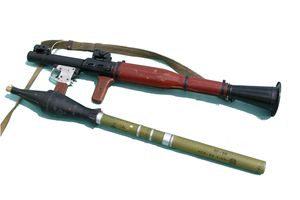 An RPG-7 with warhead |
|
| Type | Rocket-propelled grenade |
| Place of origin | |
| Service history | |
| In service | 1961–present |
| Used by | See Users |
| Production history | |
| Manufacturer | Bazalt, Defense Industries Organization, Airtronic USA |
| Unit cost | US$3,000 (Airtronic USA) |
| Produced | June, 1961 |
| Variants | RPG-7V2 (current model) RPG-7D3 (paratrooper) Type 69 RPG (China) RPG-7USA (Picatinny Rails) B-41 (Vietnam), (Cambodia) |
| Specifications | |
| Weight | 7 kg (15 lb) |
| Length | 950 mm (37.4 in) |
|
|
|
| Caliber | 40 mm (1.57 in) barrel 85mm warhead |
| Muzzle velocity | 115 m/s |
| Maximum range | ~ 920 m (1000 yd) (self detonates) |
| Sights | PGO-7 (2.7x) and UP-7V Telescopic sight) Red Dot on Picatinny Rails |
The RPG-7 (Russian: РПГ-7) is a widely-produced, portable, shoulder-launched, anti-tank rocket-propelled grenade weapon. Originally the RPG-7 (Ручной, Ruchnoy [Hand-held] Противотанковый, Protivotankovyy [Anti-Tank] Гранатомёт, Granatomyot [Grenade Launcher]) and its predecessor, the RPG-2, were designed by the Soviet Union, and now manufactured by the Bazalt company. The weapon has the GRAU index 6G3.
The ruggedness, simplicity, low cost, and effectiveness of the RPG-7 has made it the most widely used anti-tank weapon in the world. Currently around 40 countries use the weapon, and it is manufactured in a number of variants by nine countries. It is also popular with irregular and guerrilla forces. The RPG has been used in almost all conflicts across all continents since the mid-1960s from the Vietnam War to the present day War in Afghanistan and Iraq War.
The most commonly seen major variations are the RPG-7D paratrooper model (able to be broken into two parts for easier carrying), and the lighter Chinese Type 69 RPG. DIO of Iran manufactures RPG-7s of better quality with olive green handguards, H&K pistol grips, and a Commando variant.
The RPG-7 was first delivered to the Soviet Army in 1961 and deployed at a squad level. It replaced the RPG-2, having clearly out-performed the intermediate RPG-4 design during testing. The current model produced by Russia is the RPG-7V2, capable of firing standard and dual high explosive anti-tank (HEAT) rounds, high explosive/fragmentation, and thermobaric warheads (see below), with a UP-7V sighting device fitted (used in tandem with the standard 2.7x PGO-7 optical sight) to allow the use of extended range ammunition. The RPG-7D3 is the equivalent paratrooper model. Both the RPG-7V2 and RPG-7D3 were adopted by the Russian Ground Forces in 2001.
Airtronic USA, Inc. of Elk Grove Village, Illinois, USA announced at SHOT Show 2009 that it was producing a US version of the RPG-7.[1] This version includes Picatinny rails that accommodate a large variety of sights.[1]
Contents |
Description
The launcher is reloadable and based around a simple steel tube, 40 millimeters in diameter, 95.3 centimeters long, and weighing 7 kilograms. The middle of the tube is wood wrapped to protect the user from heat and the end is flared to assist in blast shielding and recoil reduction. Sighting is usually optical with a back-up iron sight, and passive infra-red and night sights are also available.
As with similar weapons, the grenade protrudes from the launch tubes. It is 40-105 millimeters in diameter and weighs between 2.5 and 4.5 kilograms. It is launched by a gunpowder booster charge, giving it an initial speed of 115 meters per second, and creating a cloud of light grey-blue smoke. The rocket motor ignites after 10 meters and sustains flight out to 500 meters at a maximum velocity of 295 meters per second. The grenade is stabilized by two sets of fins that deploy in-flight: one large set on the stabilizer pipe to maintain direction and a smaller front set to induce rotation. The grenade can fly up to 1,100 meters; the fuze sets the maximum range, usually 920 meters.
Accurate firing is difficult at ranges over 300 meters and with the RPG-7 the phrase "the closer the better" has always been true. During the Soviet invasion of Afghanistan the mujahideen tended to use the weapon at ranges of less than 80 meters. They were used in the Vietnam war to counter the introduction of the lightly armored M113. This was countered by the mounting of barbed wire bundles to predetonate the warheads. US armoured vehicles in Iraq have been fitted with "birdcage" slat armour to protect against RPGs.
The RPG-7 was used by the Provisional Irish Republican Army in Northern Ireland from 1969 to 2005, most notably in Lurgan, County Armagh, where it was used against British Army observation posts and the towering military base at Kitchen Hill in the town[2]. The IRA also used them in Catholic areas of West Belfast against British Army armoured personnel carriers and Army forward operating bases (FOB). Beechmount Avenue was renamed "RPG Avenue" because it was chosen many times by the IRA to mount Rocket attacks.[3]
Propulsion system
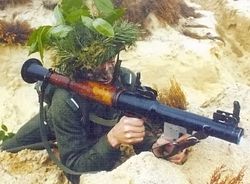
According to the United States Army Training and Doctrine Command (TRADOC) Bulletin 3u (1977) Soviet RPG-7 Antitank Grenade Launcher—Capabilities and Countermeasures, the RPG-7 munition has 2 sections: a "booster" section and a "warhead and sustainer motor" section. These must be assembled into the ready-to-use grenade. The booster consists of a "small strip powder charge" that serves to propel the grenade out of the launcher, the sustainer motor ignites and propels the grenade for the next few seconds, reaching a speed of 294 meters per second. The TRADOC bulletin provides anecdotal commentary that the RPG-7 has been fired from within buildings, which agrees with the two-stage design. It is stated that only a 2-meter standoff to a rear obstruction is needed for use inside rooms or fortifications. The fins not only provide drag stabilization, but are designed to impart a slow rotation to the grenade.
Due to the configuration of the RPG-7 sustainer/warhead section, it responds counter-intuitively to crosswinds. A crosswind will tend to exert pressure on the stabilizing fins, causing the projectile to turn into the wind. While the rocket motor is still burning, this will cause the flight path to curve into the wind. The TRADOC bulletin explains aiming difficulties for more distant moving targets in crosswinds at some length, as the RPG-7 optical sight reticle is somewhat challenging.
Ammunition
The RPG-7 can fire a variety of warheads for anti-armor (HEAT, PG-Protivotankovaya Granata) or anti-personnel (HE, OG-Oskolochnaya Granata) purposes, usually fitting with an impact (PIBD) and a 4.5 second fuze. Armor penetration is warhead dependent and ranges from 30 to 60 centimeters of RHA; one warhead, the PG-7VR, is a 'tandem charge' device, used to defeat reactive armor with a single shot.
Airtronic USA has developed a series of lethal and less lethal ammunition including a long range chemical dispersion round that can dispense 2 liters of OC/CS for civilian crowd control.
Current production ammunition for the RPG-7V2 consists of four types:
- PG-7VL standard HEAT warhead for most vehicles and fortified targets (93 mm)
- PG-7VR dual HEAT warhead for defeating modern heavily armored vehicles equipped with reactive armor (105mm)
- TBG-7V thermobaric warhead for anti-personnel and urban warfare (105 mm)
- OG-7V fragmentation warhead for anti-personnel warfare (within caliber due to limitations of international treaties)
Specifications
Manufacturer specifications for the RPG-7V1.[1] [2]

| Name | Type | Weight | Explosive Weight[4] | Diameter | Penetration | Lethal radius |
|---|---|---|---|---|---|---|
| PG-7V | Single-stage HEAT | 2.6 kg (5.7 lb) | 85 mm (3.35 in) | > 330 mm RHA (12.9 in) | ||
| PG-7VL | Single-stage HEAT | 2.6 kg (5.7 lb) | 93 mm (3.65 in) | > 500 mm RHA (19.5 in) | ||
| PG-7VR | Tandem HEAT | 4.5 kg (9.9 lb) | 105 mm (4.1 in) | 600-700 mm RHA (
) |
||
| OG-7V | Fragmentation | 2 kg (4 lb) | 210 g (0.46 lb) | 40 mm (1.6 in) | 7 m (23 ft) (vs. body armor) |
|
| TBG-7V | Single-stage thermobaric | 4.5 kg (9.9 lb) | 105 mm (4.1 in) | 10 m (33 ft) |
Hit probabilities
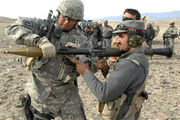
A US Army evaluation of the weapon gave the hit probabilities on a 5 meter wide (15 feet), 2.5 meter tall (7.5 feet) panel moving sideways at 4 meters per second (9 miles per hour).[5] This probability decreases when firing into crosswind due to the unusual behaviour of the round; in a 7 mile per hour wind, the gunner cannot expect to get a first-round hit more than 50% of the time beyond 180m.[6]
| Range | Percent |
|---|---|
| 50 m | 100% |
| 100 m | 96 % |
| 200 m | 51 % |
| 300 m | 22 % |
| 400 m | 9 % |
| 500 m | 4 % |
Users
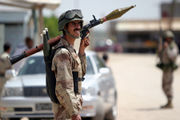
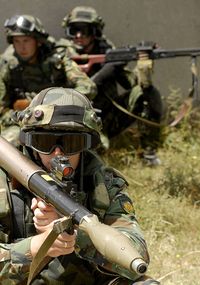
 Afghanistan[7]
Afghanistan[7] Albania[7]
Albania[7] Algeria[7]
Algeria[7] Angola[7]
Angola[7]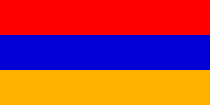 Armenia[7]
Armenia[7] Azerbaijan[7]
Azerbaijan[7] Belarus[7]
Belarus[7] Benin[7]
Benin[7] Botswana[7]
Botswana[7] Bulgaria - produced by Arsenal Corporation as ATGL-L.[8]
Bulgaria - produced by Arsenal Corporation as ATGL-L.[8]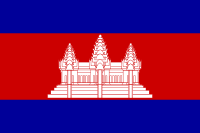 Cambodia[7]
Cambodia[7] Cape Verde[7]
Cape Verde[7] Central African Republic[7]
Central African Republic[7] Chad[7]
Chad[7] Congo-Brazzaville[7]
Congo-Brazzaville[7] Croatia[7]
Croatia[7] Cuba[7]
Cuba[7] Cyprus[7]
Cyprus[7] Czech Republic[7]
Czech Republic[7] Democratic Republic of Congo[7]
Democratic Republic of Congo[7] Djibouti[7]
Djibouti[7] Egypt[7]
Egypt[7] Eritrea[7]
Eritrea[7] Georgia[7]
Georgia[7] Ghana[7]
Ghana[7] Guinea[7]
Guinea[7] Guyana[7]
Guyana[7]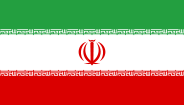 Iran[7]
Iran[7] Ireland (Provisional IRA)[9]
Ireland (Provisional IRA)[9] Iraq[7]
Iraq[7] Jordan[7]
Jordan[7] Kazakhstan[7]
Kazakhstan[7] Kyrgyzstan[7]
Kyrgyzstan[7] Laos[7]
Laos[7] Latvia[7]
Latvia[7] Lebanon[7]
Lebanon[7] Libya[7]
Libya[7] Lithuania[7]
Lithuania[7] Macedonia[7]
Macedonia[7] Madagascar[7]
Madagascar[7] Malta[7]
Malta[7] Mauritania[7]
Mauritania[7] Moldova[7]
Moldova[7] Mongolia[7]
Mongolia[7] Morocco[7]
Morocco[7] Nicaragua[7]
Nicaragua[7] Nigeria[7]
Nigeria[7]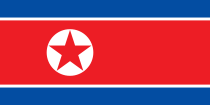 North Korea[7]
North Korea[7] Pakistan[7]
Pakistan[7] Poland[7]
Poland[7] Romania[7]
Romania[7] Russia[7]
Russia[7] Rwanda[7]
Rwanda[7] Sao Tome and Principe[7]
Sao Tome and Principe[7] Senegal[7]
Senegal[7] Seychelles[7]
Seychelles[7] Sierra Leone[7]
Sierra Leone[7] Somalia[7]
Somalia[7] South Africa: South African National Defence Force.[10]
South Africa: South African National Defence Force.[10] Sudan: Made by Military Industry Corporation as the Sinar.[11]
Sudan: Made by Military Industry Corporation as the Sinar.[11] Syria[7]
Syria[7] Tajikistan[7]
Tajikistan[7] Togo[7]
Togo[7]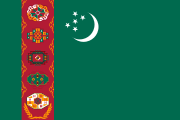 Turkmenistan[7]
Turkmenistan[7] Ukraine[7]
Ukraine[7] Uzbekistan[7]
Uzbekistan[7] United States - Manufactured by Airtronic USA.[12]
United States - Manufactured by Airtronic USA.[12] Vietnam[7]
Vietnam[7] Yemen[7]
Yemen[7] Zambia[7]
Zambia[7]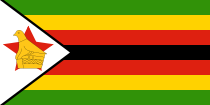 Zimbabwe[7]
Zimbabwe[7]
See also
- Rocket-propelled grenade (includes a description of tactics and history.)
- Panzerfaust
- RPG-2
- RPG-16
- PG-7VR
- Type 69 RPG
- Yasin (RPG)
- M72 LAW
References
- ↑ 1.0 1.1 David Crane (2009-04-16). "Airtronic USA Develops American RPG-7: Meet the Amerikansky Rocket-Propelled Grenade Launcher". Defense Review. http://www.defensereview.com/airtronic-usa-rpg-7-amerikansky-rocket-propelled-grenade-launcher/. Retrieved 2009-04-17.
- ↑ Oppenheimer, A.R. (2009). IRA The Bombs and the Bullets: A history of deadly ingenuity. Dublin: Irish Academic Press. p. 227. ISBN 978-0-7165-2895-1. pgs: 240 - 241
- ↑ http://www.telegraph.co.uk/news/uknews/1551421/Fragile-calm-behind-Ulsters-peace-walls.html , Fragile calm behind Ulster's 'peace walls', The Telegraph, 13-05-2007 (Date accessed: 22-10-2009)
- ↑ Per Ordata
- ↑ TRADOC BULLETIN 1, Range and Lethality of U.S. and Soviet Anti-Armour Weapons.. United States Army Training And Doctrine Command. 30 September 1975.
- ↑ TRADOC BULLETIN 3, Soviet RPG-7 Antitank Grenade Launcher.. United States Army Training And Doctrine Command. November 1976.
- ↑ 7.00 7.01 7.02 7.03 7.04 7.05 7.06 7.07 7.08 7.09 7.10 7.11 7.12 7.13 7.14 7.15 7.16 7.17 7.18 7.19 7.20 7.21 7.22 7.23 7.24 7.25 7.26 7.27 7.28 7.29 7.30 7.31 7.32 7.33 7.34 7.35 7.36 7.37 7.38 7.39 7.40 7.41 7.42 7.43 7.44 7.45 7.46 7.47 7.48 7.49 7.50 7.51 7.52 7.53 7.54 7.55 7.56 7.57 7.58 7.59 7.60 7.61 7.62 7.63 7.64 7.65 Jones, Richard D. Jane's Infantry Weapons 2009/2010. Jane's Information Group; 35 edition (January 27, 2009). ISBN 978-0-7106-2869-5.
- ↑ ATGL-L anti-tank grenade launcher, arsenal.bg
- ↑ Oppenheimer, A.R. (2009). IRA The Bombs and the Bullets: A history of deadly ingenuity. Dublin: Irish Academic Press. p. 227. ISBN 978-0-7165-2895-1. pgs: 240 - 241
- ↑ http://www.army.mil.za/equipment/weaponsystems/infantry/RPG7ATRL_106mm_Recoilless_Rifle_Syst.htm
- ↑ Sinar Light Antitank Rocket Launcher Retrieved on March 17, 2009.
- ↑ Airtonic RPG-7(USA) datasheet.